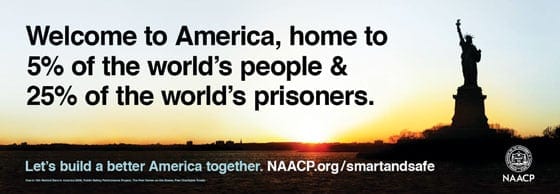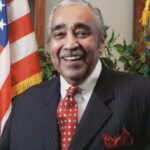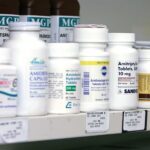
Decades of overspending on U.S. prisons undermine educational opportunities and create distressed neighborhoods that drain a disproportionate share of limited public funds to incarcerate residents, according to a new report by the NAACP.
The report, “Misplaced Priorities: Under Educate, Over Incarcerate,” lays out how expenditures for prison systems approach or outstrip funding for higher education in many states. The report also links high incarceration rates with low performing schools, finding that neighborhoods with their cities’ highest rates of incarceration are also home to those cities’ lowest performing public schools.
“Prison spending affects everyone by limiting what states and local governments can spend on education — an issue that has become more critical as states face their biggest budget crisis since the Great Depression,” the report says.
The release of “Misplaced Priorities” coincides with the start of a multi-city regional billboard campaign aimed at influencing lawmakers to change decades-old criminal justice policies of escalating investment in incarceration, which the report concludes does more damage than benefit to the United States. The report and the billboard launch are components of the NAACP’s “Smart and Safe Campaign,” an initiative designed to reform the U.S. criminal justice system.
Several states legislatures, including New York, Kansas and Michigan, have passed corrections reform laws recently. Others, including Virginia, have various reform proposals pending. Voters in California, which has the largest and most expensive prison system in the United States, recently elected Kamala D. Harris attorney general. A key part of Harris’s platform was criminal justice reform.
“In state after state, we are learning that mass incarceration and warehousing of prisoners, does not work,” said Benjamin Todd Jealous, NAACP president and chief executive officer. “Politicians are finding that they can inspire people to vote for them with policies that further justice rather than policies based on fear and intimidation.”
The United States accounts for 5 percent of the world’s population, but 25 percent of the world’s prison population — about 2.3 million people, according to the report. Federal, state and local governments spend about $70 billion annually to incarcerate adults and juveniles. Spending on incarceration has increased 336 percent since 1986, the report says, and only a portion of allocated funds are being used to house people who have committed serious and violent crimes.
While about 33 percent of the U.S. population is African American or Latino, these ethnic and racial groups comprise 58 percent of the nation’s prisoners — due in large part to the differences in how police enforce drug laws.
Of the $70 billion spent each year on incarceration, according to the report, $50 billion comes from state funds. Almost all of that $50 billion is allocated from states’ general funds. General funds are responsible for about 70 percent of state funds for elementary and high schools and about 90 percent for prisons. A separate 2008 study by the Pew Center for the States found that between 1987 and 2007, funding for higher education grew by 21 percent while funding for corrections grew by 127 percent.
“As we spend more and more on incarceration, states have less and less to spend on education,” Jealous said.
Failure to make a change, the report concludes, will maintain a “negative, self-fulfilling cycle” of cutting education funding, raising tuition for higher education, undermining job readiness and reducing tax revenue.
The report’s authors focused on six cities — including Houston, Los Angeles and Philadelphia — to illustrate the results of continuing criminal justice policies formed in the 1970s and 1980s during the “War on Drugs.” Researchers mapped the lowest performing schools as measured by math proficiency and superimposed neighborhoods with the highest rates of incarceration.
In Houston, five of the six lower performing schools are in neighborhoods with the highest incarceration rates. In Los Angeles, 69 of the 90 lower performing schools are in neighborhoods with the highest incarceration rates. In Philadelphia, 23 of the 35 lower performing schools are in neighborhoods with the highest incarceration rates.
“While the relationship between education and prison spending may not always be clear to legislators when they support costly criminal justice policies,” the report says, “the cycle between lackluster support for education and the barriers facing some neighborhoods that seek to build well-educated and safe communities can be seen all across the country.
“This is particularly visible in neighborhoods where millions are spent to imprison people while schools are shut, teachers are let go, classrooms are over-crowded, afterschool programs close and college and university costs rise.”
The report concludes with 11 policy recommendations to reduce prison populations and shift the savings to education budgets. They include reforming sentencing and parole as well as expanding prosecutors diversion programs.
Ben Wrobel is a member of the NAACP Communications Office.






